Banana Pi M3 vs Raspberry Pi 3, which is the better Single Board Computer? This is a question that has been asked by many people and there is no definite answer. Both of these Single Board Computers have their own pros and cons, so it can be difficult to decide which one is the best for you. In this article, we will compare Banana Pi M3 vs Raspberry Pi 3 and help you make an informed decision about which one is right for you.
Single Board Computers in General
They can fit into the palm of your hand and pack all the components needed for a computing device, including processor, memory, storage, networking capabilities, and more. Single board computers are often used in robotics projects where they provide an inexpensive way to build autonomous robots with powerful processing power.
They have also found their way into lightweight cloud servers and Internet of Things (IoT) devices as well. The uses for these devices are many as they provide flexibility and compactness that is otherwise difficult to achieve with traditional computer systems.
What is Banana Pi 3
It was designed to be an open source platform for hardware enthusiasts and engineers to build applications and projects with the help of its various components such as CPU, GPU, memory, storage, I/O ports etc.
The Banana Pi M3 is a powerful single board computer that runs on the ARM Cortex A53 processor from Allwinner Technology. It comes with 2GB RAM, 8GB eMMC flash storage, WiFi & Bluetooth capabilities and Gigabit Ethernet port for networking. Additionally, it also has multiple GPIO pins for connecting external devices like sensors or displays. The Banana Pi M3 supports the Android operating system out of the box but can also be programmed in other languages such as Python, Java and more. [1], [2], [3]
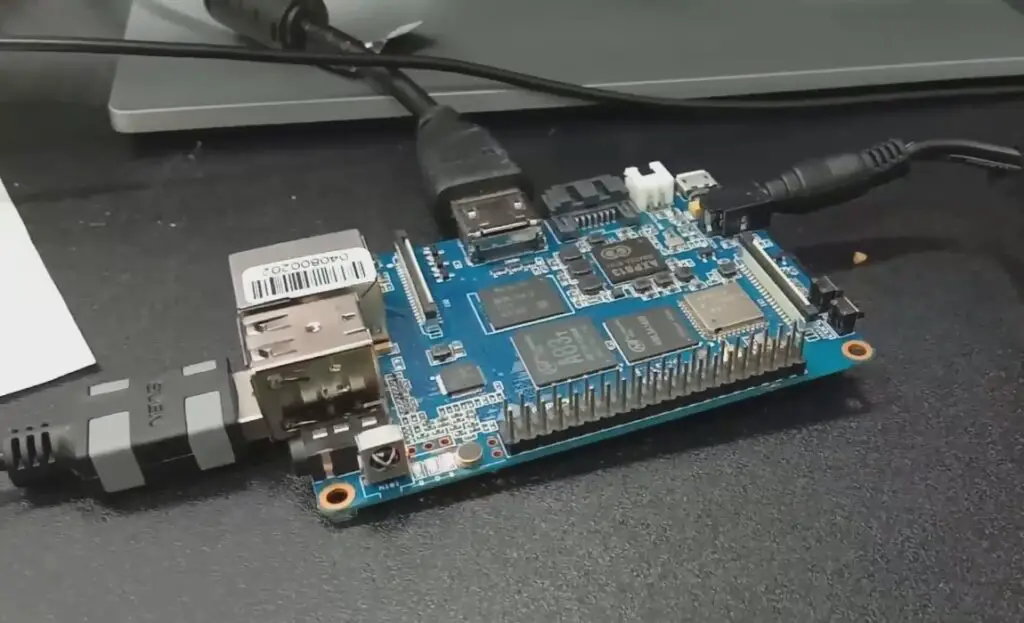
Advantages of Banana Pi M3
We will begin with the benefits of Banana Pi M3. And this board does have a few of them!
Official support multiple Linux distros
The Banana Pi M3 is compatible with a wide range of Linux distros such as Ubuntu, Debian, Raspbian and more. This makes it easy to install new applications or use existing ones on the device. Additionally, official support for Android 5.1 means that you can run many mobile apps right off the board!
This allows you to use the board for many different tasks, from media streaming to gaming. Furthermore, with the help of its wide selection of I/O ports and GPIO pins, you can even connect external devices like sensors or displays if necessary.
Impressive compatibility with Raspberry Pi software
Banana Pi M3 is also compatible with many of the same software used for Raspberry Pi. This means that you can use your existing Raspberry Pi projects and programs on the Banana Pi M3, which is a huge advantage for those who have already invested time in making software for their Raspberry Pis.
Onboard storage
The Banana Pi M3 also has 8GB of onboard storage which can be expanded with a microSD card or USB drive. This extra space is really useful if you plan on using multiple applications at once or need to store large amounts of data. [1], [2], [3]
Disadvantages of Banana Pi M3
Although the Banana Pi M3 has many advantages, it does have a few disadvantages. You should keep these in mind when comparing it to other single board computers such as the Raspberry Pi 3.
Lack of off-the-shelf camera modules
One major disadvantage is the lack of off-the-shelf camera modules, which makes it difficult to use the board for image or video processing. The Banana Pi M3 does have a CSI connector, but users will have to source their own compatible camera module in order to take advantage of this feature.
Heat dissipation issues
Another issue that may arise is heat dissipation. Due to the board’s high-powered processor, it can run hot under certain conditions. As a result, users need to be aware of this and ensure proper cooling for their projects in order to prevent any damage from occurring.
Since the board doesn’t come with a heat sink, third party cooling solutions may need to be employed in order to keep the Banana Pi M3 at optimal temperatures.
Expensive
Finally, the Banana Pi M3 is more expensive than other single board computers such as the Raspberry Pi 3. This may be a deterrent for some, but ultimately it depends on what you are looking to do with your device and how much you are willing to spend.
You should expect to pay around $78 for the Banana Pi M3, while the Raspberry Pi 3 costs around $35-$40. This is a significant price difference and something that you should consider when choosing between the two boards. [1], [2], [3]
What is Raspberry Pi 3
It is an inexpensive and small computer that has been widely adopted for use in education, robotics projects, home automation systems, and more.
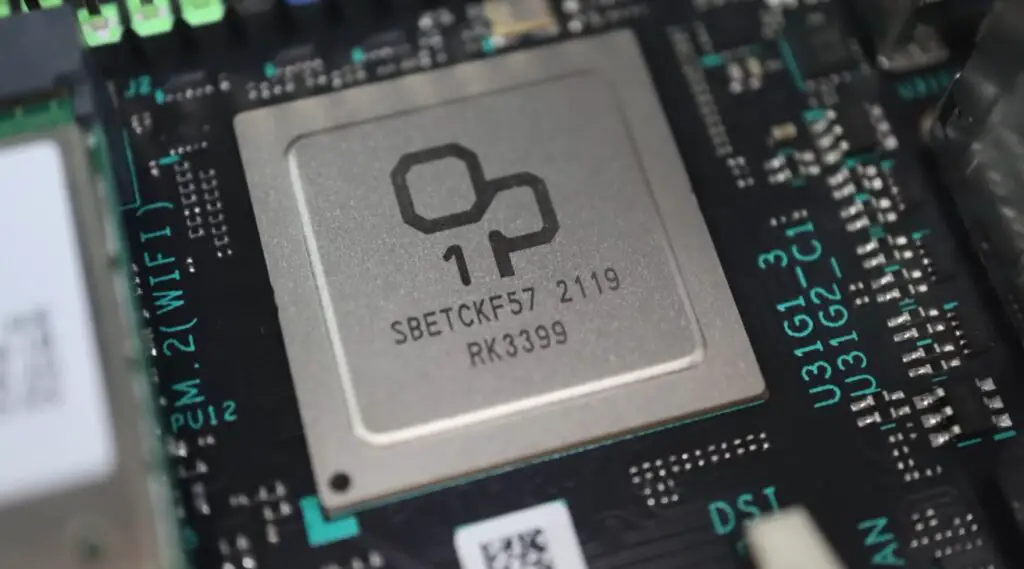
The Raspberry Pi 3 B is one the most popular models of Raspberry Pi due to its impressive features and capabilities.
It is a small, versatile single board computer. It has a 1.4GHz 64-bit quad-core ARM processor, on-board 802.11b WiFi and Bluetooth, 1GB of RAM with microSD storage support up to 32GB, and four USB 2.0 ports. As an added bonus it also includes enough GPIO pins for basic hardware control projects! The Raspberry Pi 3 is perfect for beginner makers who want to get their hands dirty but don’t have the resources to buy a more powerful board. [1], [3], [4]
Advantages of Raspberry Pi 3
Now that we have given a brief overview of what the Raspberry Pi 3 is, let’s discuss some of its advantages.
Great GPIO functionality
One of the most impressive features of the Raspberry Pi 3 is its GPIO functionality. The onboard pins on the Raspberry Pi make it possible to connect it to other devices, making it an ideal choice for creating interesting projects with hardware components.
The GPIO pins can be used for a range of tasks, including controlling motors, driving servos, and interfacing with sensors and displays. The GPIO pins are very versatile and can also be used to create digital logic circuits or even program microcontrollers. This makes it possible to use the Raspberry Pi in a variety of projects that require custom hardware control solutions.
Affordable
As we already mentioned, the Raspberry Pi 3 is incredibly affordable, making it an ideal choice for those who don’t have a lot of money to spend on their projects. The Raspberry Pi Foundation has always aimed to keep their boards as inexpensive as possible. All in all, you should expect to pay around $35-$40 for it.
When compared to other single board computers, the Raspberry Pi stands out as one of the most cost-effective options available. It packs a punch despite its low price tag and this makes it an appealing choice for those looking for a powerful but budget-friendly development platform.
Great OS compatibility
The Raspberry Pi 3 is also compatible with a variety of operating systems. It can run both the official Raspbian OS as well as third-party distributions such as Ubuntu, Fedora, and more. This makes it easy to find compatible software for your projects.
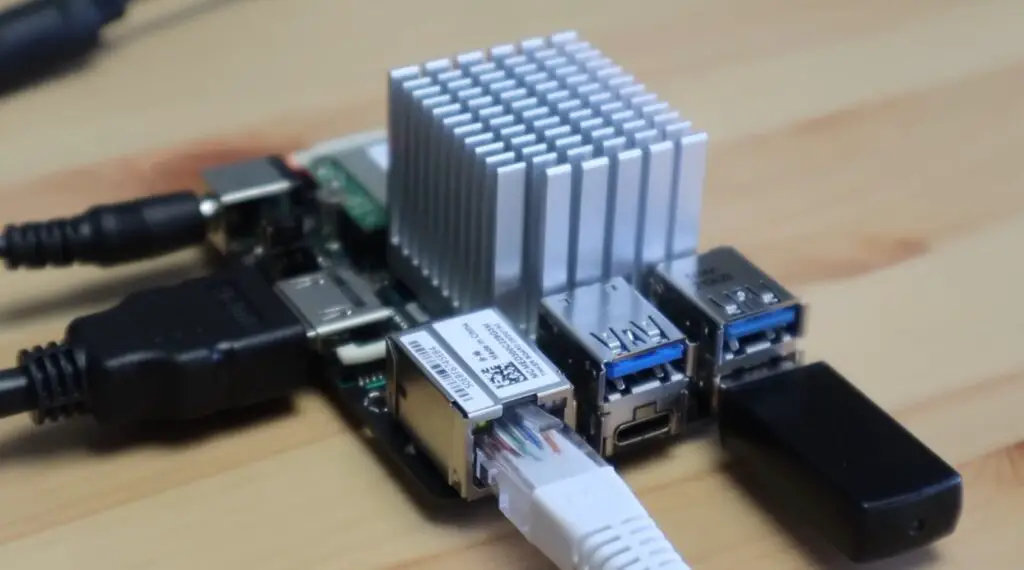
In addition, the Raspberry Pi 3 also supports various development platforms such as Python,.NET Core, Node.js, Java, and more. This means that you can use the board to develop applications in multiple languages without having to worry about compatibility issues.
What’s more, the default OS it comes with, the Raspbian is a great choice for development. It is easy to use and comes with a wide array of applications that can be used for various projects. This makes it ideal for beginners who want to get started with their own projects without having to worry about learning how the OS works.
Easy to set up
The Raspberry Pi 3 is also incredibly easy to set up. All you need to do is plug it in and turn it on. From there, you can install the OS of your choice and begin exploring its many features.
What’s more, the board supports a wide variety of peripherals, making it possible to use things like mice, keyboards, external storage devices, and more. This makes it simple to get up and running quickly with your projects.
Ideal for setting up a multimedia center
In addition to its other features, the Raspberry Pi 3 is also an ideal choice for setting up a multimedia center. With the help of third-party software like Kodi, you can easily turn your Raspberry Pi into a media streaming device.
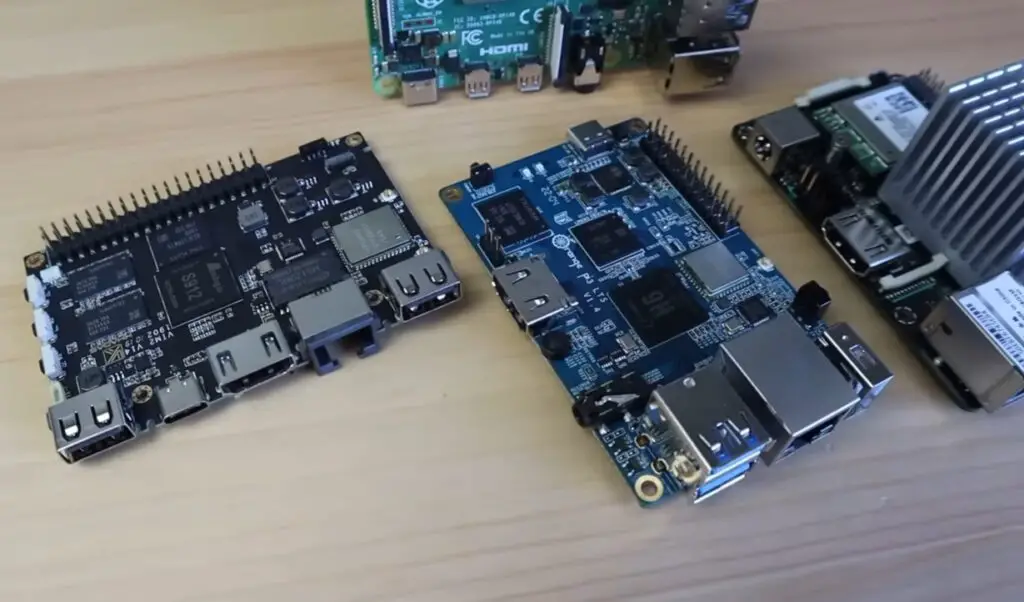
This makes it easy to access all of your favorite movies, TV shows, and music from one convenient location. You can even install plugins or add-ons to extend its functionality even further.
It boasts a large and active community
Finally, the Raspberry Pi 3 also boasts a large and active community. This means that if you ever run into an issue with your projects or have any questions about the board, there is likely someone out there who can help you.
Additionally, there are tons of online forums dedicated to Raspberry Pi related topics that provide helpful information on various issues. [1], [3], [4]
Disadvantages of Raspberry Pi 3
While the Raspberry Pi 3 has many advantages, there are some weaknesses that you should consider before purchasing one.
Limited onboard NIC capabilities
One such weakness is its limited onboard NIC (Network Interface Card) capabilities. This means that it will not be able to transfer large amounts of data as quickly as some other boards.
Slow Wi-Fi
Another of the main issues with the Raspberry Pi 3 is its slow Wi-Fi performance. The board has a built-in Wi-Fi chip but it lacks a good antenna and this can cause connection problems when streaming or transferring large files.
Still, you can use the built-in Ethernet port to connect to a wired network. This will provide faster and more reliable speeds, but it does require you to have an Ethernet cable connected from your router or modem.
Not as powerful as some other SBCs
Another upset some may have with the Raspberry Pi 3 is that it does not have as much power as some other single board computers. While it is certainly capable of handling basic or medium tasks, more complex projects may require a more powerful board. For example, it may have some issues streaming video in 4K or handling complex AI tasks.

In addition, its RAM capacity is also slightly lower compared to some other SBCs. This could lead to slower performance or even crashes when trying to run multiple applications at once.
Power consumption
Finally, the Raspberry Pi 3 also consumes more power than some other boards on the market. This is due to its higher clock frequency and increased number of cores which can draw extra power from the power supply.
This means that you may need to invest in a powerful enough PSU if you plan to run resource-intensive applications on the board. Additionally, you should make sure that your power supply has adequate cooling as overheating can cause serious damage to your board. [1], [3], [4]
FAQ
What OS does Banana Pi use?
The Banana Pi M3 is compatible with a range of operating systems, including Android, Ubuntu, and Debian. It comes pre-installed with a version of the Linux distribution Debian that has been tailored to its hardware specifications. Users can easily install additional applications and software packages from the Banana Pi’s repositories.
Is Banana Pi better than Raspberry Pi?
When it comes to the debate of Banana Pi M3 vs Raspberry Pi 3, there’s no definitive answer as to which single board computer is better. Each device has its own strengths and weaknesses, making them suitable for different applications.
The Banana Pi M3 offers faster speeds than the Raspberry Pi 3, but lacks the wide range of built-in features.
The Raspberry Pi 3, on the other hand, is a more affordable and easier-to-use single board computer. As far as software goes, the Raspberry Pi 3 has an extensive library of custom apps and tools which makes it great for hobbyists who are getting into programming or tinkering with hardware projects. However, power users may find that the Raspberry Pi 3 can’t quite keep up with some of the more demanding tasks. And Raspberry Pi 4 blows these two old SBCs out of the water.
Can Raspberry Pi OS run on Banana Pi?
Yes, it is possible to install a compatible version of the Raspberry Pi OS on Banana Pi. However, this requires that you have an up-to-date BIOS, and then use a special script to download and install the operating system. Additionally, some features may not be available in the Raspberry Pi OS running on Banana Pi due to hardware differences between the two Single Board Computers (SBCs).
Which Raspberry Pi is the most powerful?
Raspberry Pi 4 B is currently the most powerful Raspberry Pi available in terms of processing power. The Raspberry Pi 4 B boasts a 1.5GHz quad-core 64-bitARM Cortex-A72 processor and up to 8GB of RAM. This makes it capable of running multiple tasks simultaneously, such as multimedia applications, web servers, or game emulators.
Useful Video: Banana Pi VS Raspberry Pi
Conclusion
At the end of the day, both the Banana Pi M3 and Raspberry Pi 3 are great choices for single board computers. However, each board has its own unique benefits that make it better suited for different applications. If you’re looking for an affordable solution with great OS compatibility, plenty of connectivity options, and an impressive level of performance, the Raspberry Pi 3 may be your best bet. However, if you want a more powerful computer that’s packed with features and has great potential for further expansion and customization, then the Banana Pi M3 is definitely worth considering.
Just be sure to consider pros and cons of each board carefully, and make sure you pick the one that is right for your specific needs. No matter which board you choose, both are great choices for getting started with single board computing. With so much to offer in terms of performance, connectivity options, and flexibility, it’s easy to see why these boards have become so popular among DIY enthusiasts and professionals alike. Hopefully this guide has helped you decide which board is the best fit for your needs! Good luck!
References
- https://all3dp.com/2/banana-pi-vs-raspberry-pi-what-are-the-differences/
- https://wiki.banana-pi.org/Banana_Pi_BPI-M3
- https://www.raspberrypi.com/products/raspberry-pi-3-model-b/
- https://www.slant.co/versus/13377/15521/~banana-pi-m3_vs_raspberry-pi-3-model-b





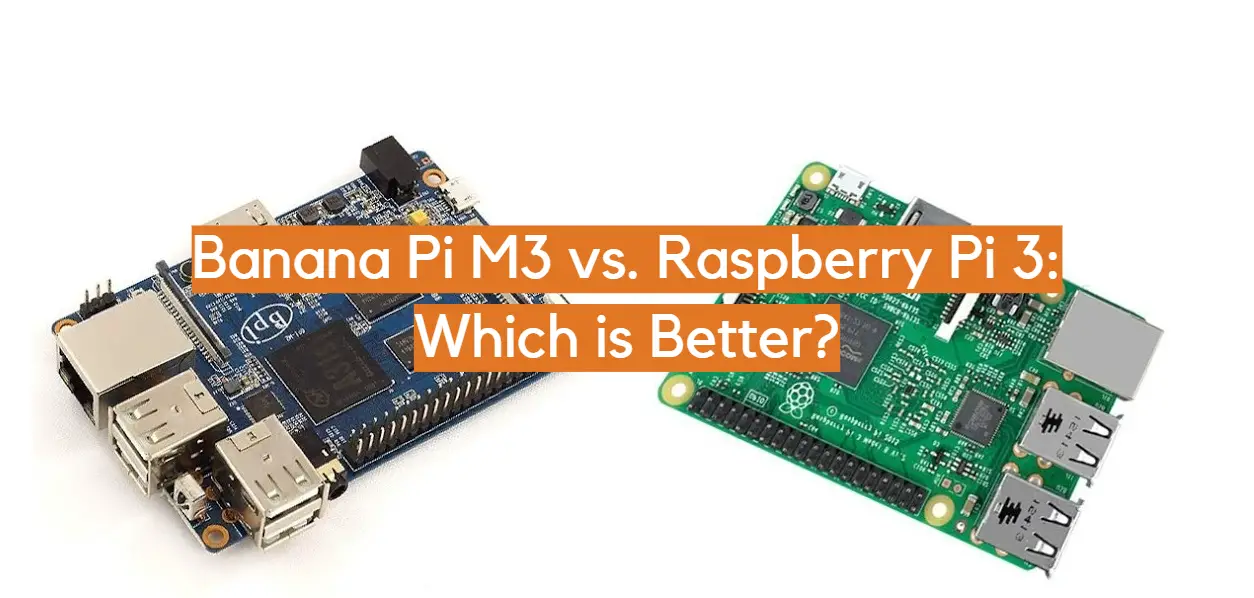







Leave a Reply